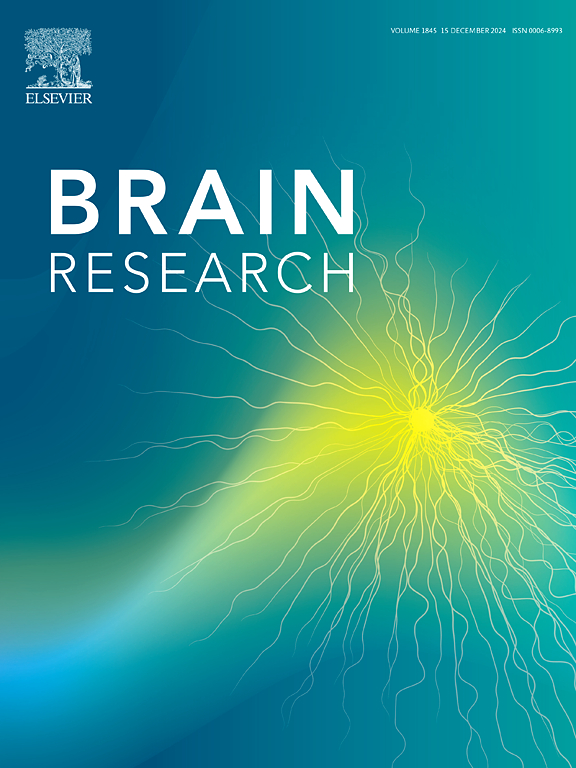Challenges and hopes for treatment of anxiety disorder in the autistic population
IF 2.7
4区 医学
Q3 NEUROSCIENCES
引用次数: 0
Abstract
Anxiety disorders, marked by excessive fear and worry, are particularly prevalent in autism, affecting up to 45 % of individuals with the condition. Since the 1960s, advances in neuroscience, psychology, and psychopharmacology have enhanced understanding and treatment of anxiety disorders in general population. Standardized diagnostic criteria development facilitated accurate classification of anxiety disorders. Neurobiological research identified key brain regions forming the basis of the amygdala-centred fear circuit model. Pharmacological advancements introduced selective serotonin reuptake inhibitors (SSRIs) and serotonin-norepinephrine reuptake inhibitors (SNRIs) as safer, first-line treatments. However, these medications show limited efficacy and significant side effects in autistic individuals, highlighting the need for alternative treatments. Cognitive-behavioural therapy (CBT) has gained empirical support, helping to reduce avoidance behaviours, but modifications are often needed for autistic individuals. Emerging therapies, including Mindfulness-Based Stress Reduction for Autism Spectrum Disorder (MASSI) and virtual reality-based interventions, are being explored for individuals with more treatment-resistant anxiety. Ongoing clinical trials are assessing medications used for other psychiatric disorders to determine their efficacy in anxiety treatment for autism. Recent genetic and neuroimaging research has revealed altered brain connectivity and genetic susceptibility in anxiety, promoting the development of personalized treatments. Despite these advances, challenges remain in optimizing interventions and addressing treatment resistance, necessitating continued research and innovation.

自闭症患者焦虑症治疗的挑战与希望
以过度恐惧和担忧为特征的焦虑症在自闭症患者中尤为普遍,影响了多达45%的自闭症患者。自20世纪60年代以来,神经科学、心理学和精神药理学的进步增强了对普通人群焦虑症的理解和治疗。标准化诊断标准的制定促进了焦虑症的准确分类。神经生物学研究确定了形成以杏仁核为中心的恐惧回路模型基础的关键大脑区域。药理学的进步引入了选择性5 -羟色胺再摄取抑制剂(SSRIs)和5 -羟色胺-去甲肾上腺素再摄取抑制剂(SNRIs)作为更安全的一线治疗方法。然而,这些药物在自闭症患者中显示出有限的疗效和显著的副作用,强调了替代治疗的必要性。认知行为疗法(CBT)已经获得了经验支持,有助于减少回避行为,但自闭症患者往往需要修改。新兴疗法,包括基于正念的自闭症谱系障碍减压(MASSI)和基于虚拟现实的干预,正在探索用于治疗难治性焦虑症患者的治疗方法。正在进行的临床试验正在评估用于治疗其他精神疾病的药物,以确定它们在治疗自闭症焦虑方面的疗效。最近的遗传和神经影像学研究揭示了焦虑的大脑连接改变和遗传易感性,促进了个性化治疗的发展。尽管取得了这些进展,但在优化干预措施和解决治疗耐药性方面仍然存在挑战,需要继续进行研究和创新。
本文章由计算机程序翻译,如有差异,请以英文原文为准。
求助全文
约1分钟内获得全文
求助全文
来源期刊

Brain Research
医学-神经科学
CiteScore
5.90
自引率
3.40%
发文量
268
审稿时长
47 days
期刊介绍:
An international multidisciplinary journal devoted to fundamental research in the brain sciences.
Brain Research publishes papers reporting interdisciplinary investigations of nervous system structure and function that are of general interest to the international community of neuroscientists. As is evident from the journals name, its scope is broad, ranging from cellular and molecular studies through systems neuroscience, cognition and disease. Invited reviews are also published; suggestions for and inquiries about potential reviews are welcomed.
With the appearance of the final issue of the 2011 subscription, Vol. 67/1-2 (24 June 2011), Brain Research Reviews has ceased publication as a distinct journal separate from Brain Research. Review articles accepted for Brain Research are now published in that journal.
 求助内容:
求助内容: 应助结果提醒方式:
应助结果提醒方式:


